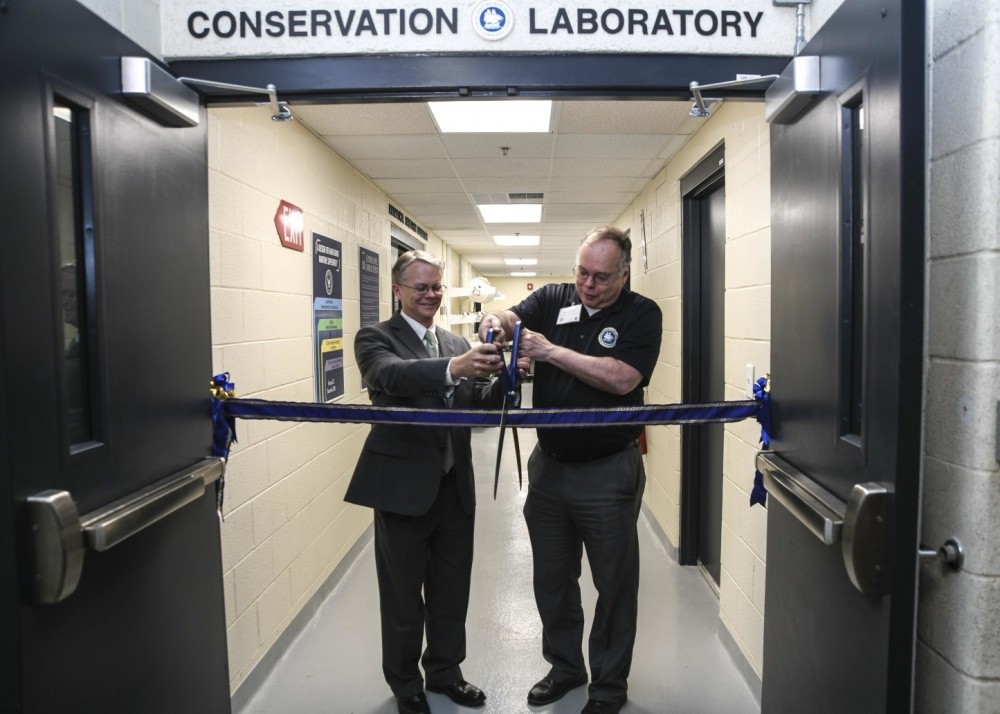Image: Melissa Swanson and Karl Knauer, conservators at Naval History and Heritage Command, undertake conservation cleaning on the exterior of the USS Utah bell | U.S. Navy photo by Naval History and Heritage Command Collection Management Facility staff/Released
Naval History and Heritage Command’s Conservation Branch is celebrating its five-year anniversary of preserving U.S. Navy cultural property.
The organisation’s Conservation Branch is responsible for analysing and conserving the U.S. Navy’s broad spectrum of over 300,000 historical artefacts, including ships’ bells, uniforms and plaques.
Condition assessments, scientific analysis, stabilisation and treatment, artefact re-housing, developing appropriate storage solutions, and providing exhibit guidance all falls under the unit’s remit.
All this work is undertaken at a specially designed facility in Virginia, with the ultimate aim of preserving the maximum amount of naval history for the general public to access and enjoy in perpetuity.
The site, situated in the city of Richmond, began operating in May 2019 and is home to a lab equipped with steel cabinetry and casework, chemical-resistant counters, mobile hydraulic workbenches, a water filtration system, an 8-foot ducted fume hood, direct access to a loading dock, and climate-controlled artefact storage.

“To date, we have assessed 318 different artefacts. We have conserved 69 artefacts ranging from a small commemorative medal to a large sampan. Many of those are now on loan around the country,” notes Conservation Branch head David Krop.
“Collectively, we have created a physical laboratory where technical conservation work and innovation occur on a weekly basis. In doing so, we are fortunate to carry on the vital work of using heritage to enhance warfighting capability and preserve and present an accurate history of the U.S. Navy.”
Looking ahead, Krop says the Branch is “exploring ways to scale-up” to enable conservation work of ‘macro artefacts’ such as submarine sails, deck guns, and watercraft.





